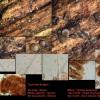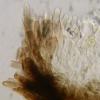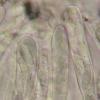
09-01-2026 17:41
Arnold BüschlenHallo, F. dilatata wird von vielen Bryoparasiten

10-01-2026 20:00
Tom SchrierHi all,We found picnidia on Protoparmeliopsis mur

07-01-2026 22:22
 Danny Newman
Danny Newman
Tatraea sp. on indet. hardwood The Swag, Great Sm

10-01-2026 01:18
 Danny Newman
Danny Newman
cf. Neovaginatispora fuckelii on indet. shrub Pre

07-01-2026 10:24
 Danny Newman
Danny Newman
Pezicula sp. on indet. hardwood Appalachian Highl

09-01-2026 10:08
 Blasco Rafael
Blasco Rafael
Hola, en el mismo habitat que la anteriorRetamaDia

08-01-2026 21:22
 Blasco Rafael
Blasco Rafael
Hola, He recogido esta muestra de Orbilia sobre Re

07-01-2026 17:29
 Marc Detollenaere
Marc Detollenaere
Dear Forum,On a barkless Populus I found some smal

10-11-2021 17:33
 Riet van Oosten
Riet van Oosten
Add-on topic http://www.ascofrance.com/forum/7059

07-01-2026 10:05
 Danny Newman
Danny Newman
cf. Chaetospermum on XylariaCosby Campground, Grea
Asco sp.
Yannick Mourgues,
25-01-2008 21:30
 Bonsoir à tous.
Bonsoir à tous.Voici un nouvel asco que j'ai trouvé sur un piquet en bois (probablement de pin) dans une pelouse rase. Celui-ci était planté verticalement et soutenait un barbelé. Les ascos étaient groupés près du sol sur le support.
Description :
Macro:
Fructifications 0,5-1 mm de diamètre, cupuliformes jeunes et très rapidement discoïdes étalées, attachées au support par le centre, mais je n'ai pas vu de stipe. Hyménium olivâtre foncé avec parfois des reflets lilacins à la bino. Noirâtre à l'½il nu. Excipulum noir couvert de minuscules poils.
Micro:
Spores elliptiques, hyalines, lisses, sans guttules, parfois bisériées, 6,3-8,1x2,3-3,1 um.
Asques clavés, octosporés, IKI-, boucles+, 45-55x6-8 um.
Paraphyses larges de 2um, septées, lisses, hyalines, cylindriques à sommets renflé jusqu'à 4um.
Hyphes de l'excipulum (Poils?) : cylindriques, septés entre 5 et 8 fois, bruns mais progressivement hyalins vers la marge, 51-65x3-4 um, à sommet renflé et large jusqu'à 6,5 um.
Textura globulosa.
Voilà ! Je ne vois même pas le genre. Auriez-vous une idée ?
Merci par avance !
Yannick Mourgues
Andreas Gminder,
25-01-2008 21:34

Re:Asco sp.
Bonjour,
les images sont trop petit pour voir quelque chose! Pourquoi faire une collage?
Amicalement,
Andreas
les images sont trop petit pour voir quelque chose! Pourquoi faire une collage?
Amicalement,
Andreas
Yannick Mourgues,
25-01-2008 21:40

Re:Asco sp.
Bigre, l'image est trop petite. On ne voit rien. Je mets tout ça dans un .doc.
Yannick
Yannick
Yannick Mourgues,
25-01-2008 21:43

Re:Asco sp.
C'est mieux ?
J'ai essayé de regrouper mes images comme l'a dit Christian Lechat. Pour faire moins de messages.
yannick
J'ai essayé de regrouper mes images comme l'a dit Christian Lechat. Pour faire moins de messages.
yannick
Andreas Gminder,
25-01-2008 21:59

Re:Asco sp.
Bonsoir,
mieux, oui, mais je ne voit pas très bien néanmois.
Il semble, que ca pourrait être une Mollisia très vielle, pour ne pas dire presque mort ....
Mais je ne suis pas certain.
Amicalement,
Andreas
mieux, oui, mais je ne voit pas très bien néanmois.
Il semble, que ca pourrait être une Mollisia très vielle, pour ne pas dire presque mort ....
Mais je ne suis pas certain.
Amicalement,
Andreas
Hans-Otto Baral,
25-01-2008 22:07

Re:Asco sp.
I assume that the living parahyses do not contain VBs (refract. vacuoles). Then I am quite sure you have a fungus which I collected repeatedly but have great problems to give a generic and species name. I used cf. Fuscoscypha, cf. Ciliolarina etc., and use "mollisioides" as working name. On the DVD you can compare HB 7450d, 5481c, 5531a, 6170a
The species is xerotolerant growing on various woody substrates. typical for xeros the inamyloid asci.
Here attached a new one, 8205a:
Sweden, Skane, S of Kullaberg, sea shore, bushes of Rosa & Rubus, Rubus frutic. agg. cane c. 0.5 m above ground, only found on one out of c. 20 canes, soc. Durella connivens & Mollisia ligni. Ap. rehydr. (0.15-)0.2-0.5(-0.7) mm diam, somewhat erumpent from outer fibres, 100-110 µm thick. Asci *37-48 x 6.8-7.5 µm or *43-54 x 7-7.8 µm, with croziers, dome +/- absent, max. +0.8 µm thick, IKI-. Sp. *7-8.5 x 2.3-2.7 µm or *7.5-10 x 2.7-3.1 µm, cylindr., Ölm. 0-½. Hairs c. (20-)30-40(-50) x 3.5-5.5(-6.5) µm, medium reddishbrown, thin-walled, smooth to very slightly rough in upper part, often with a septum 6-10 µm above base. Paraph. cyl., no VBs, somet. apic. very slightly rough, rarely brownish hair-proliferations in centre of disc. Medulla non-gelatinized. Ectexc. base & lower fl. t. glob.-angul., hyaline -> light brown, upper & mid flanks 45->10° t. angul.-prism. bright brown. - Fully alive after c. 1 week dry.
Zotto
The species is xerotolerant growing on various woody substrates. typical for xeros the inamyloid asci.
Here attached a new one, 8205a:
Sweden, Skane, S of Kullaberg, sea shore, bushes of Rosa & Rubus, Rubus frutic. agg. cane c. 0.5 m above ground, only found on one out of c. 20 canes, soc. Durella connivens & Mollisia ligni. Ap. rehydr. (0.15-)0.2-0.5(-0.7) mm diam, somewhat erumpent from outer fibres, 100-110 µm thick. Asci *37-48 x 6.8-7.5 µm or *43-54 x 7-7.8 µm, with croziers, dome +/- absent, max. +0.8 µm thick, IKI-. Sp. *7-8.5 x 2.3-2.7 µm or *7.5-10 x 2.7-3.1 µm, cylindr., Ölm. 0-½. Hairs c. (20-)30-40(-50) x 3.5-5.5(-6.5) µm, medium reddishbrown, thin-walled, smooth to very slightly rough in upper part, often with a septum 6-10 µm above base. Paraph. cyl., no VBs, somet. apic. very slightly rough, rarely brownish hair-proliferations in centre of disc. Medulla non-gelatinized. Ectexc. base & lower fl. t. glob.-angul., hyaline -> light brown, upper & mid flanks 45->10° t. angul.-prism. bright brown. - Fully alive after c. 1 week dry.
Zotto
Andreas Gminder,
25-01-2008 22:17

Re:Asco sp.
Hallo Zotto,
die Asci mit ihrem schön halbrunden Apex erinnern mich an Perrotia flammea.
Dahin können aber sicher keine Beziehungen bestehen, oder?
beste Grüße,
Andreas
die Asci mit ihrem schön halbrunden Apex erinnern mich an Perrotia flammea.
Dahin können aber sicher keine Beziehungen bestehen, oder?
beste Grüße,
Andreas
Hans-Otto Baral,
26-01-2008 17:29

Re:Asco sp.
Hi Andreas
the Perrotia flammea ascus is often thought to be characteristic, but it is surely the evolutionary result of a reduction from a more conical and amyloid ascus type. Such reductions occured all over the Helotiales (often otherwise almost indistinguishable species have an amyloid ring and conical apex), often in correlation with growing on xeric substrate), and have therefore much less value as a generic feature than the amyloid ascus with its different types of apical rings. Piotr has also an interesting collection with such "Perrotia-asci", but it probably belongs more to the group around Hyaloscypha.
Zotto
the Perrotia flammea ascus is often thought to be characteristic, but it is surely the evolutionary result of a reduction from a more conical and amyloid ascus type. Such reductions occured all over the Helotiales (often otherwise almost indistinguishable species have an amyloid ring and conical apex), often in correlation with growing on xeric substrate), and have therefore much less value as a generic feature than the amyloid ascus with its different types of apical rings. Piotr has also an interesting collection with such "Perrotia-asci", but it probably belongs more to the group around Hyaloscypha.
Zotto
Yannick Mourgues,
26-01-2008 21:16

Re:Asco sp.
Hi Zotto,
If it's a xerotolerant specie, could I Send it to you ?
As this, you could examine it. Are you interested by it ?
Yannick
If it's a xerotolerant specie, could I Send it to you ?
As this, you could examine it. Are you interested by it ?
Yannick
Hans-Otto Baral,
26-01-2008 23:10

Re:Asco sp.
Yes, if you didn't keep it too long in a moist box, please send it air-dried.
Zotto
Zotto
Hans-Otto Baral,
01-02-2008 12:23

Re:Asco sp.
Now I have reexamined the collection. The result is interesting: It is clearly a Mollisia which is quite overmature, with euamyloid (!) asci (strongly blue in IKI), with croziers, spores about 7-9 x 2.5 µm, no oil drops. Excipulum dark brown globulosa-angularis from base to margin. Margin with distinct short brown hairs. I first thought for M. ligni (also the habit), but asci are amyloid.
Hans-Otto Baral,
01-02-2008 12:28

Re:Asco sp.
But there is a Helicogonium (intrahymenial parasite without own fruit-bodies) which is present with both anamorph and asci in perhaps half of the apothecia. The anamorph has small elliptic to onion-loke conidiophores in whorls (photo below right), and abundant small conidia each with a single LB. Asci I have not seen many, and always quite immature, inamyloid, without croziers.
So I am sure, Yannick, that you got the negative IKI-reaction from the Helicogonium, not the Mollisia.
The substrate is angiospermic, I suspect Robinia. Are there Robinias? The wood looks like being dried out rapidly during sunny weather.
Please let me also know the collection data.
thanks! Zotto
So I am sure, Yannick, that you got the negative IKI-reaction from the Helicogonium, not the Mollisia.
The substrate is angiospermic, I suspect Robinia. Are there Robinias? The wood looks like being dried out rapidly during sunny weather.
Please let me also know the collection data.
thanks! Zotto
Andreas Gminder,
01-02-2008 12:30

Re:Asco sp.
Hallo Zotto,
did you look at the KOH reaction? If yellow, it should be the species which is in my key as "pyrenopezizoides". The reaction is quite distinct in fresh collections , but only short time persistent, not as obviouse as in M. fusca e.g.. I think that in overmature collections like this the reaction is quite weak and undisctinct.
If it is truely negative, it must be something around cinerea, but probably not a cinerea ss.str.?
M. ligni should, besides the negative ascus pore, have some oildrops in the spores and the protrudings at the margin would also be a little longer and more obviouse, what do you think?
beste Grüße,
Andreas
did you look at the KOH reaction? If yellow, it should be the species which is in my key as "pyrenopezizoides". The reaction is quite distinct in fresh collections , but only short time persistent, not as obviouse as in M. fusca e.g.. I think that in overmature collections like this the reaction is quite weak and undisctinct.
If it is truely negative, it must be something around cinerea, but probably not a cinerea ss.str.?
M. ligni should, besides the negative ascus pore, have some oildrops in the spores and the protrudings at the margin would also be a little longer and more obviouse, what do you think?
beste Grüße,
Andreas
Hans-Otto Baral,
01-02-2008 12:46

Re:Asco sp.
Hi Andreas
Wooww, an answer only 1 second after submitting! You are right, I found some apos in which the remnants of the VBs in the dead paraphyses are still well visible, and here a distinct yellow reaction in KOH is seen, mainly remaining inside the paraphyses. But I will give up this collection, it is quite clear that there are two different Mollisias, both dead and overmature, the other KOH-, also with amyloid asci, hairs perhaps more like those in Yannick's photo, spores with a few minute LBs. And maybe even different Helicogoniums, one with narrow conidiophores... O.k., I will take the first as M. pyrenopezizoides.
cheers
Zotto
Wooww, an answer only 1 second after submitting! You are right, I found some apos in which the remnants of the VBs in the dead paraphyses are still well visible, and here a distinct yellow reaction in KOH is seen, mainly remaining inside the paraphyses. But I will give up this collection, it is quite clear that there are two different Mollisias, both dead and overmature, the other KOH-, also with amyloid asci, hairs perhaps more like those in Yannick's photo, spores with a few minute LBs. And maybe even different Helicogoniums, one with narrow conidiophores... O.k., I will take the first as M. pyrenopezizoides.
cheers
Zotto
Andreas Gminder,
01-02-2008 12:55

Re:Asco sp.
Hallo Zotto,
>> But I will give up this collection
good decision ;-)
beste Grüße,
Andreas
>> But I will give up this collection
good decision ;-)
beste Grüße,
Andreas
Yannick Mourgues,
01-02-2008 13:08

Re:Asco sp.
Dear Zotto,
Thank's a lot for having a look to my collection.
So if I understand what you said, there are two differents old and overmature Mollisias in this collection (perhaps Mollisia pyrenopezizoides as said by Andreas) , with undertermined intrahymenial parasite Helicogoniums. So that's why it was so difficult for me !
I have found it on an old post which was used to support a barbed wire, in a meadow where there weren't any trees all around. I can't tell you more about the wood that has been used.
Thank's a lot again for studied my collection. Thank's too, Andreas !
Yannick
Thank's a lot for having a look to my collection.
So if I understand what you said, there are two differents old and overmature Mollisias in this collection (perhaps Mollisia pyrenopezizoides as said by Andreas) , with undertermined intrahymenial parasite Helicogoniums. So that's why it was so difficult for me !
I have found it on an old post which was used to support a barbed wire, in a meadow where there weren't any trees all around. I can't tell you more about the wood that has been used.
Thank's a lot again for studied my collection. Thank's too, Andreas !
Yannick
Yannick Mourgues,
01-02-2008 13:46

Re:Asco sp.
I agree. Give up this collection !
Yannick
Yannick
Hans-Otto Baral,
01-02-2008 22:43

Re:Asco sp.
Don´t worry, I will.
But anyhow, let me know the site or village where you took this piece.
Zotto
But anyhow, let me know the site or village where you took this piece.
Zotto
Yannick Mourgues,
01-02-2008 23:13

Re:Asco sp.
It was near the village "Champerboux", Causse de Sauveterre, département Lozère (48), France.
1047m
Coordonnées GPS :
N44°24'21.7''
EO03°28'05.2''
I can't be more precise !!!
Why do you need these data ?
Yannick
1047m
Coordonnées GPS :
N44°24'21.7''
EO03°28'05.2''
I can't be more precise !!!
Why do you need these data ?
Yannick
Hans-Otto Baral,
02-02-2008 11:47

Re:Asco sp.
Oh, I will keep my photos of the Helicogonium anamorph, so it is never good to have some collections, either images or specimens, without collection data. If you once wish to publish on a species, you can then say that it occurs also in la France, at high altitude etc....
your data are fully enough. I am even happy for GPS minutes but accept also seconds.
Zotto
your data are fully enough. I am even happy for GPS minutes but accept also seconds.
Zotto

 3910.doc
3910.doc




